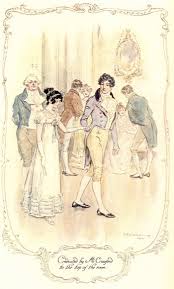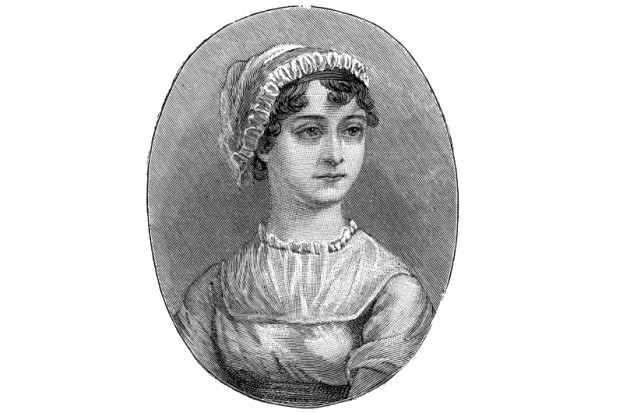What does “Regency” mean, anyway?

The Regency in Great Britain has both a broad and a technical definition.

The Regency in Great Britain has both a broad and a technical definition.
 All the period music used in our production was recorded on a Casio Privia (PX 350M) digital keyboard. The pieces marked “arranged” had added instrumentation (french horn, contra bass, bassoon, etc). For the two Beethoven Symphonies, a one-piano four-hand edition was used to create the orchestrations. The pieces marked “altered” were amended in some way: measures removed, tempos significantly changed.
All the period music used in our production was recorded on a Casio Privia (PX 350M) digital keyboard. The pieces marked “arranged” had added instrumentation (french horn, contra bass, bassoon, etc). For the two Beethoven Symphonies, a one-piano four-hand edition was used to create the orchestrations. The pieces marked “altered” were amended in some way: measures removed, tempos significantly changed.
It is always a challenge to take a script developed by another company, for their stage and their actors. Bedlam Theatre’s innovative production of member Kate Hamill’s adaptation has received rave reviews for its lively and unusual devices. Their cast of 10 required far more doubling of roles, and their script suggested using a puppet for one character. But the script itself is robust, well-constructed, and lends itself to a variety of interpretations and flexibility in cast size, making it ideal for any company with more imagination than money.

afO was blessed by Tod Mohr’s willingness to construct our rolling tables, which attach securely with near-invisible magnets. We ended up using them a bit less than originally intended, but they still managed to serve us well as desks, dining tables, a piano forte and a bed, as well as several different horse-drawn carriages. Our Lady Middleton was the only actress to be wheeled about (our tip of the hat to the original production, in which ALL the furniture was on wheels).
One of the more significant changes to our production was the prologue.
The story of Sense & Sensibility (without spoilers)
 Henry Dashwood was a wealthy landowner and master of Norland Park, a beautiful estate in Somerset. His first wife died, leaving him with a son, John. His second marriage produced three daughters, Elinor, Marianne and Margaret. Henry’s unexpected death after 20 years of marriage results in John Dashwood, now married with a child, inheriting Norland Park and the whole Dashwood fortune, through a legal contract known as an ‘entail‘. An entail means that the property can only pass from father to son, not to daughters. If no son were living, the nearest male relation would inherit. (This is the device that drives the plot of the popular BBC drama, Downton Abbey.)
Henry Dashwood was a wealthy landowner and master of Norland Park, a beautiful estate in Somerset. His first wife died, leaving him with a son, John. His second marriage produced three daughters, Elinor, Marianne and Margaret. Henry’s unexpected death after 20 years of marriage results in John Dashwood, now married with a child, inheriting Norland Park and the whole Dashwood fortune, through a legal contract known as an ‘entail‘. An entail means that the property can only pass from father to son, not to daughters. If no son were living, the nearest male relation would inherit. (This is the device that drives the plot of the popular BBC drama, Downton Abbey.)
Although the dying Mr. Dashwood pleads with his son to “provide for” his step mother and three half-sisters, John’s wife, Fanny, persuades him to offer them only some minor assistance in moving out of Norland. Meanwhile, Fanny’s brother, Edward Ferrars, visits and he and Elinor develop a warm friendship. When Fanny makes it clear that her mother, Mrs. Ferrars, will never allow Edward to marry a woman without dowry (money from her family which goes to the man she marries) and station, Mrs. Dashwood hastily removes herself and her daughters to a cottage in Devonshire, on the estate of her cousin, Sir John Middleton.
 Jane Austen (16 December 1775 – 18 July 1817) spent most of her 41 years living quietly with immediate family members in the English village of Steventon and Chawton, Hampshire. Her father was rector of the parish church at Steventon for many years, and took in pupils to supplement his modest income. Jane was the seventh of eight children born to her parents, and the second of only two girls. (Jane and her older sister Cassandra were extremely close throughout Jane’s life, as evidenced by their many letters to one another.)
Jane Austen (16 December 1775 – 18 July 1817) spent most of her 41 years living quietly with immediate family members in the English village of Steventon and Chawton, Hampshire. Her father was rector of the parish church at Steventon for many years, and took in pupils to supplement his modest income. Jane was the seventh of eight children born to her parents, and the second of only two girls. (Jane and her older sister Cassandra were extremely close throughout Jane’s life, as evidenced by their many letters to one another.)
